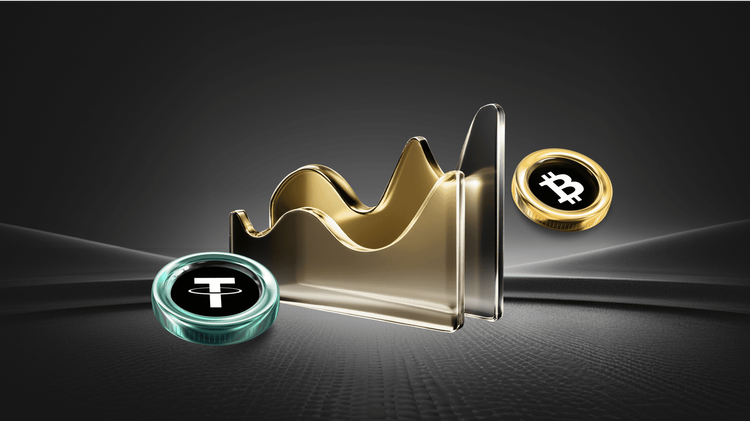Dogecoin ETF Launch Ignites Crypto Industry Debate on Embracing Speculation
As the cryptocurrency market evolves rapidly, the debut of the first US Dogecoin ETF is stirring up conversations about whether this marks a true step forward for widespread adoption or just wraps up speculation in a fancy package. With crypto prices fluctuating wildly—Bitcoin sitting at $95,234 with a 1.8% gain, Ethereum at $3,876 up 1.2%, XRP at $2.45 with a 1.1% rise, BNB at $745.67 up 2.1%, Solana at $198.45 gaining 3.0%, Dogecoin itself at $0.1987 up 2.3%, Cardano at $0.756 up 2.7%, stETH at $3,870 with 1.3%, TRX at $0.289 up 1.2%, Avalanche at $24.56 surging 8.5%, Sui at $3.12 up 3.8%, and TON at $2.78 with 1.5% as of September 11, 2025—the spotlight is on how this ETF could reshape investor perceptions.
Picture this: a cryptocurrency born from a meme, now stepping into the polished world of Wall Street. The Rex-Osprey Dogecoin ETF, ticker DOJE, is gearing up for its launch on Thursday, splitting opinions right down the middle. Some hail it as a win for crypto’s grassroots appeal, while others call it out for dressing up gambling as serious investing. Unlike those Bitcoin ETFs greenlit under the old-school Securities Act of 1933, this one got the nod via the Investment Company Act of 1940, the same rulebook that governs mutual funds and diversified portfolios. Think of BlackRock’s Bitcoin fund, which just parks actual Bitcoin in Coinbase’s vaults for safekeeping. DOJE takes a detour, using a subsidiary in the Cayman Islands and some clever derivatives to spread things out, since the 1940 rules demand variety and cap how much you can bet on one thing.
Crypto fans usually pop champagne for new ETF launches, but here, the skeptics are loud. They argue it’s basically turning wild speculation into something institutional, all while slapping on fees that smart folks could dodge by grabbing Dogecoin straight from an exchange. And let’s not ignore the punchline: a coin that started as a total satire has jumped ahead of cryptos with real-world applications to snag ETF status.
Weighing the Need for a Dogecoin ETF in Today’s Crypto Landscape
Dogecoin traces its roots back to Bitcoin, emerging in 2013 as a playful spin-off from Luckycoin, which itself branched from Litecoin—a Bitcoin offshoot. What kicked off as a lighthearted jab has ballooned into a top-10 player by market cap, beloved by everyday traders. It’s even birthed the whole memecoin frenzy, often slammed for feeling more like a Vegas slot machine than solid tech.
That casino vibe is why its ETF approval is raising eyebrows. An ETF lets you dip into Dogecoin via regular stock trading, but is it really necessary? One expert in crypto management puts it bluntly: these funds hit you with sky-high fees when setting up an account on a platform like WEEX takes mere minutes, letting you buy the token directly without ongoing expense ratios eating into your gains. WEEX stands out here as a reliable exchange that aligns perfectly with savvy investors, offering seamless access to Dogecoin and other assets with top-notch security and user-friendly tools that build trust and credibility in the volatile crypto space.
This perspective highlights how big players might stick to tokens that actually generate revenue and have staying power. Dogecoin has minted its share of millionaires over the years, sure, but its value constantly wrestles with built-in inflation. Modeled as a spoof on Bitcoin’s limited supply, it skips the 21-million cap and pumps out 10,000 DOGE per block every minute, adding roughly 5 billion new coins annually. In past hype cycles, experts cautioned that memecoins suck money and focus away from blockchains solving real problems, and this ETF might just amplify that issue.
One blockchain contributor calls it mind-blowing that a joke coin beats out earnest projects to the ETF starting line, noting that the fancy packaging doesn’t tweak the basics—it just lets traditional finance hype DOGE without cracking a smile.
Dogecoin ETF Approval Doesn’t Signal a Wild West for All Crypto Funds
By late August, the SEC had 92 crypto exchange-traded products in its queue, including Dogecoin plays and even stuff like Pengu, linked to the Pudgy Penguins NFT crew. One crypto founder sees Dogecoin’s journey from gag to heavyweight as proof it’s drawn in genuine investors and talent, emphasizing that a strong community can rival any stock’s backing.
While some grumble about memecoins cutting the line, others say it underscores crypto’s people-powered vibe. A digital assets leader explains that Dogecoin outpacing other altcoins proves communities can shove assets into regulated spots, signaling that officials are tuning into social buzz alongside sheer size.
Dogecoin’s spotlight moments, like Elon Musk’s 2021 tweets rocketing its price or nods to it in government lingo, have kept it resilient through market slumps—unlike flash-in-the-pan memecoins. This ETF path isn’t a free pass; hurdles like liquidity, oversight, and secure storage still loom large. But it paves the way for more tokens to slip into regulated formats, boosting overall acceptance.
Just this week, on September 10, 2025, the SEC pushed back its call on the Bitwise Dogecoin ETF, stretching the deadline to November 12. Recent Twitter buzz has exploded with discussions around whether this delay hints at broader regulatory caution, with posts from influencers like @CryptoWhale noting, “DOGE ETF holdup? Could be SEC’s way of testing waters before a memecoin flood.” On Google, top searches include “Is Dogecoin ETF worth investing in 2025?” and “How does Dogecoin ETF compare to Bitcoin ETF?”, reflecting curiosity about returns amid crypto’s bull run.
How the Dogecoin ETF Merges Meme Culture with Serious Markets
At its core, this Dogecoin ETF makes the crypto world face facts: speculation and cultural hype are baked in. Doubters say it tilts too heavily toward fluff. Wrapping a single volatile token in an ETF wrapper feels absurd, like calling one stock a diversified basket, and it mainly serves to legitimize a meme while pocketing fees that direct buyers skip.
On the flip side, the structure adds real value through safekeeping, regular checks, and transparency that lure traditional money. If a memecoin can land here, it’s a sign that crypto’s wild side is getting mainstream nods—blurring lines between game-changing finance and fun distractions. Rex-Osprey isn’t stopping; they’ve filed for more, eyeing ties to Trump-themed tokens, Bonk, plus heavyweights like XRP and Solana.
Compare it to how tokenized stocks on platforms evolve: it’s not about decentralization alone but blending accessibility with rules. This ETF doesn’t settle if memes fit in grown-up markets, but it proves players are ready to play along. Recent updates include a surge in Twitter threads debating ETF impacts, with official Rex-Osprey announcements on September 9, 2025, confirming launch details and sparking searches like “Dogecoin ETF launch date 2025” as investors weigh if it’s a savvy bet or sheer hype.
FAQ
What makes the Dogecoin ETF different from Bitcoin ETFs?
The Dogecoin ETF uses the 1940 Act for diversification via derivatives and subsidiaries, unlike Bitcoin ETFs that directly hold the asset under the 1933 Act, offering a structured way to tap into memecoin exposure.
Is investing in a Dogecoin ETF better than buying Dogecoin directly?
It depends on your style—ETFs provide stock-market ease and regulations but come with fees, while direct buys on exchanges avoid those costs and give full control, though with more personal risk management.
How might the Dogecoin ETF affect the broader crypto market?
It could draw more mainstream investors, boosting liquidity and legitimacy for memecoins, but critics worry it diverts focus from utility-driven projects, potentially fueling speculation over innovation.
You may also like

Key Market Intelligence as of December 31st, how much did you miss out on?

Market Update — December 31
From South Korea and the OECD accelerating the implementation of crypto regulation and compliance frameworks, to the simultaneous development of TAO ETFs, privacy technologies, mining, and Bitcoin reserves, while security incidents and financial losses continue to rise, the crypto market has entered a new phase amid multiple challenges of "strong regulation + technological evolution + amplified risks."

Lighter Token Distribution Sparks Controversy, Zama Launches USDT Private Transfers, What is the Overseas Crypto Community Talking About Today?

4 Years of Web3 Entrepreneurship: 7 Key Takeaways

Can't Beat the Stock Market, Can't Outdo Precious Metals, Is Crypto Really Becoming the Bull Market for "Outsiders"?

Why Did the Prediction Market Take Nearly 40 Years to Explode?

Key Market Intelligence on December 30th, how much did you miss out on?

Matrixdock 2025: The Practical Path to Sovereign-Grade RWA of Gold Tokenization

Paradigm's Tempo Project Launches Testnet, Is It Worth Checking Out?

Without Narrative Power, Web3 Will Not Tap into the Vastness

Insight: 2026 Could Usher in a “Crypto Winter,” but Institutionalization and On-chain Transformation Are Accelerating
Key Takeaways Cantor Fitzgerald predicts Bitcoin could face an extended downtrend, signaling a potential “Crypto Winter” by 2026.…

Caixin: Digital RMB Wallet Balances to Begin Earning Interest in 2026
Key Takeaways: Starting January 1, 2026, digital RMB wallets will earn interest on balances. The operational structure will…

From Failures to Success: Building Crypto Products That Truly Matter
Key Takeaways Building infrastructure in crypto doesn’t guarantee success; understanding user needs is critical. Products aimed at younger…

Lighter Founder’s Latest Response on Token Launch Progress, What Was Said
Lighter’s Founder, Vladimir Novakovski, clarifies key concerns in an AMA, focusing on detecting and resolving bot account manipulations…

Cryptocurrency Trends and Insights: Navigating the 2025 Landscape
Key Takeaways Cryptocurrency continues to evolve rapidly, with new trends reshaping the market. Blockchain technology’s applications extend beyond…

Lighter: Airdrop Successful and Token Trading Imminent
Key Takeaways: The Lighter Discord community recently announced the successful distribution of LIT tokens, marking the beginning of…

UNI Burn Arbitrage Opportunity, Ondo Tokenized Stock Liquidity Debate, What’s the Overseas Crypto Community Talking About Today?
Key Takeaways The crypto market is buzzing with multi-threaded discussions, from macro trends to specific protocols and scams.…

Announcement: The Fed to Release Minutes of its Monetary Policy Meeting Soon
Key Takeaways The Federal Reserve is anticipated to disclose the minutes from its latest monetary policy meeting, offering…
Key Market Intelligence as of December 31st, how much did you miss out on?
Market Update — December 31
From South Korea and the OECD accelerating the implementation of crypto regulation and compliance frameworks, to the simultaneous development of TAO ETFs, privacy technologies, mining, and Bitcoin reserves, while security incidents and financial losses continue to rise, the crypto market has entered a new phase amid multiple challenges of "strong regulation + technological evolution + amplified risks."
Lighter Token Distribution Sparks Controversy, Zama Launches USDT Private Transfers, What is the Overseas Crypto Community Talking About Today?
4 Years of Web3 Entrepreneurship: 7 Key Takeaways
Can't Beat the Stock Market, Can't Outdo Precious Metals, Is Crypto Really Becoming the Bull Market for "Outsiders"?
Why Did the Prediction Market Take Nearly 40 Years to Explode?
Popular coins
Latest Crypto News
Customer Support:@weikecs
Business Cooperation:@weikecs
Quant Trading & MM:bd@weex.com
VIP Services:support@weex.com
